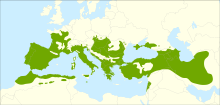Fraxinus angustifolia
| Fraxinus angustifolia | |
|---|---|
 |
|
| Foliage of subsp. oxycarpa | |
| Scientific classification | |
| Kingdom: | Plantae |
| Clade: | Angiosperms |
| Clade: | Eudicots |
| Clade: | Asterids |
| Order: | Lamiales |
| Family: | Oleaceae |
| Genus: | Fraxinus |
| Section: | Fraxinus sect. Fraxinus |
| Species: | F. angustifolia |
| Binomial name | |
|
Fraxinus angustifolia Vahl |
|
 |
|
| Distribution map | |
| Synonyms | |
Fraxinus angustifolia, the narrow-leafed ash, is a species of Fraxinus native to central and southern Europe, northwest Africa, and southwest Asia.
It is a medium-sized deciduous tree growing to 20–30 m tall with a trunk up to 1.5 m diameter. The bark is smooth and pale grey on young trees, becoming square-cracked and knobbly on old trees. The buds are pale brown, which readily distinguishes it from the related Fraxinus excelsior (black buds) even in winter. The leaves are in opposite pairs or whorls of three, pinnate, 15–25 cm long, with 3-13 leaflets; the leaflets being distinctively slender, 3–8 cm long and 1-1.5 cm broad. The flowers are produced in inflorescences which can be male, hermaphrodite or mixed male and hermaphrodite. The male and hermaphrodite flowers occur on all individuals, i.e. all trees are functionally hermaphrodite. Flowering occurs in early spring. The fruit when fully formed is a samara 3–4 cm long, the seed 1.5–2 cm long with a pale brown wing 1.5–2 cm long.
There are four subspecies, treated as distinct species by some authors:
of Fraxinus angustifolia subsp. angustifolia
of Fraxinus angustifolia subsp. oxycarpa
In Sicily, it is cultivated as a source of a plant sap product called manna (see Fraxinus ornus).
Fraxinus angustifolia subsp. angustifolia has become a weed in many parts of Australia, where it is known as Desert Ash. It has been widely planted as a street and park tree, and has spread to native bushland and grasslands, as well as stream banks and drainage lines, out-competing native plants for moisture, light and nutrients.
Leaves of subsp. oxycarpa
Specimen of 'Raywood', typically showing several broken branches
...
Wikipedia
